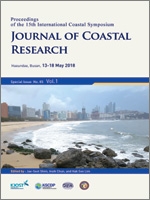Peterson, A.; Herkül, K., and Torn, K., 2018. Modeling Coastal Benthic Biodiversity Using Georeferenced Environmental Data: Mapping Present and Predicting Future Changes. In: Shim, J.-S.; Chun, I., and Lim, H.S. (eds.), Proceedings from the International Coastal Symposium (ICS) 2018 (Busan, Republic of Korea). Journal of Coastal Research, Special Issue No. 85, pp. 376–380. Coconut Creek (Florida), ISSN 0749-0208.
Biodiversity is critical for maintaining and stabilizing ecosystem processes. There is a need for high resolution biodiversity maps that cover large sea areas in order to address ecological questions related to biodiversity-ecosystem functioning relationships and to provide data for marine environmental protection and management decisions. Climate change can significantly impact patterns of biodiversity with substantial implications for ecosystem functioning and human use of marine biological resources. The Baltic Sea is expected to face serious environmental changes due to climate change during the 21st century mainly manifested as changes in salinity and temperature. Thus, it is important to map the biodiversity now and predict the potential future changes. Boosted regression trees (BRT) modeling method was used to produce maps of benthic biodiversity in the northern Baltic Sea. Environmental layers (such as depth, salinity and temperature) were used as independent variables in the models to predict the spatial distribution of species richness. For future predictions, we had climate scenario-based layers for salinity and temperature. BRT modeling proved to have high predictive ability. Based on the models, depth was the most important environmental variable influencing benthic biodiversity. Future biodiversity was predicted to significantly decrease both in terms of numerical values of species richness and spatial coverage (highly diverse area becoming narrower along coastline) compared to nowadays conditions. Our study showed that predictive modeling of biodiversity patterns can give valuable insights into potential future changes.





